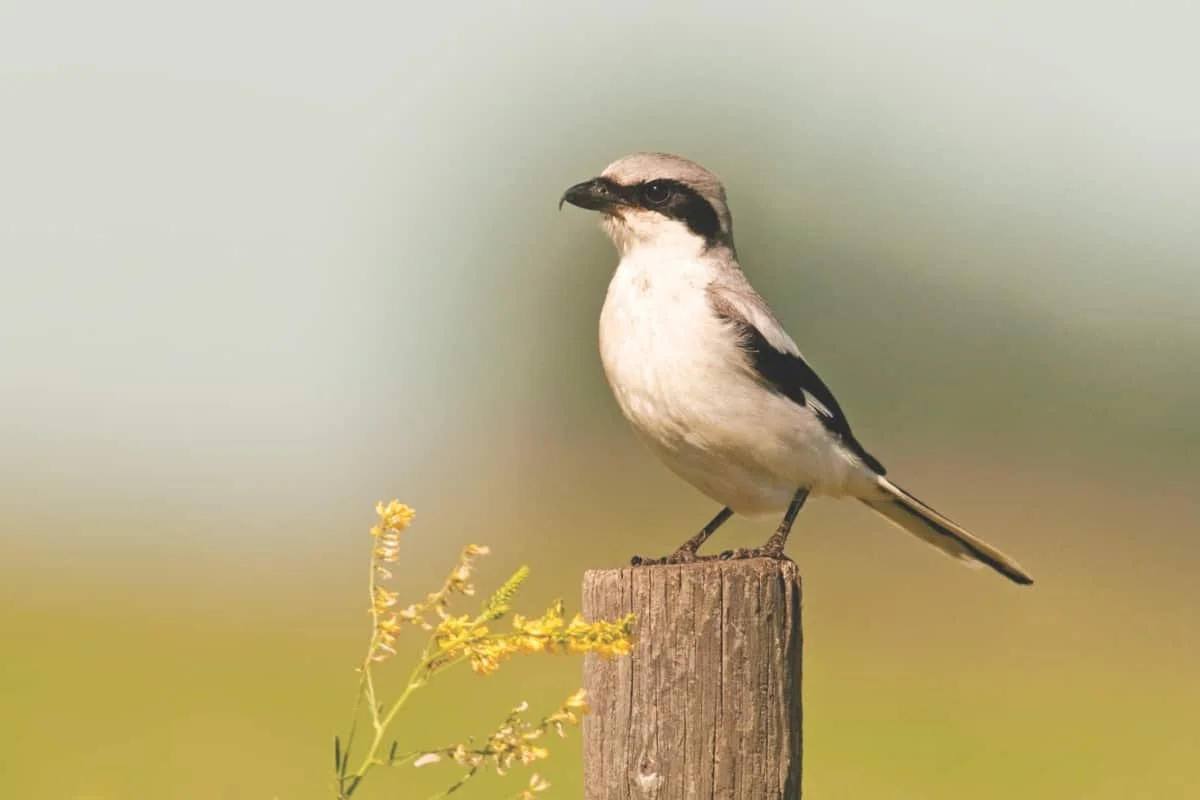Loggerhead Shrikes - Back and on the Attack!
Keep an eye out for returning Shrikes this May! Spring has sprung and that means many of our birds are back on the prairies to once again raise their families. In this busy time, Nature Saskatchewan asks everyone to keep an eye out for the threatened Loggerhead Shrike.
Photo by May Haga Losh
This fierce bird is often seen perched on tall branches near open spaces. When looking to ID this bird watch for a slate grey back, white belly, and black wings and tail. They also have a striking mask that extends across their face to behind their eyes. When in flight, watch for the flash of hidden white patches on their black wings. “These birds have the unique behaviour of impaling their prey,” Emily Putz, Shrubs for Shrikes coordinator for Nature Saskatchewan explains, “they will find sharp points such as a thorny branch or a wire barb to hang their prey, then rip small pieces off with their hooked beak. Pairs will often hang prey on branches near their nest as a larder for later as well, living up to their nickname as the Butcherbird!”
Prey can often be seen hung in areas with shrikes, especially in the spring when the males return and try and impress the females with their hunting skills. Prey can include insects such as caterpillars and grasshoppers, birds, amphibians and snakes, and rodents such as mice and voles. They have even been known to take larger prey such as a young gopher! “Thorny shrubs such as Buffaloberry and Hawthorns are especially attractive to nest in and great shrubs to include in your yard site if you are trying to attract shrikes for their pest control abilities,” further explains Putz, “but in yards or shelterbelts, Shrikes might also use prickly conifers or caraganas as substitutes.”
Loggerhead Shrikes populations have been on the decline since the 1960s, with up to 80% of the population lost across their range. Habitat loss and degradation is the leading cause of their decline, both of their prairie hunting habitat and the shrubs they call their homes. Shelterbelts are becoming things of the past which further contributes, as their adapted shrub habitat also becomes sparse.
While the prairie Loggerhead Shrike is listed as Threatened in Canada, Saskatchewan, at the heart of their remaining range, still has the largest population of breeding pairs in the country. Nature Saskatchewan’s Shrubs for Shrike’s program aims to keep Saskatchewan’s population strong by getting more eyes and ears our looking for these unique birds and contributing to their population monitoring. The program also works directly with landholders and land managers that may have spotted them nesting on their land, by conserving their habitat and reporting their sightings through our annual census.
If you happen to spot a Loggerhead Shrike this spring, please report your sighting to Nature Saskatchewan’s toll-free HOOTline, 1-800-667-HOOT (4668) or email Emily Putz at outreach@naturesask.ca. Every sighting helps with tracking the population and range of this iconic prairie bird. All Caller and program participant information is kept confidential.

